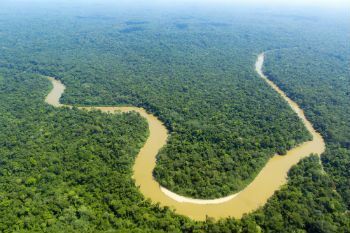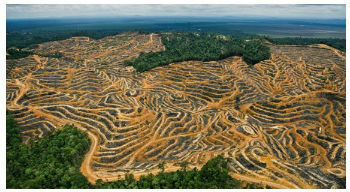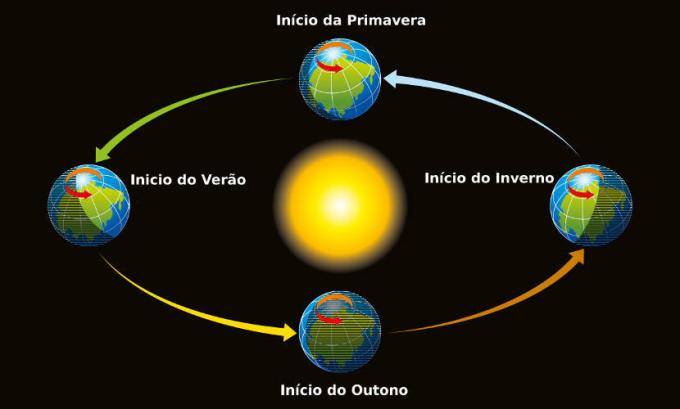The Amazon rainforest is considered the largest tropical forest in the world and concentrates enormous biodiversity. In addition, it is part of the Amazon biome, the largest of the six Brazilian biomes.
It corresponds to 53% of the tropical forests that still exist. Therefore, its conservation is debated internationally due to its dimension and ecological importance.
Main characteristics of the Amazon Forest
Location
The Amazon forest is located in the north of South America, covering the states of Amazonas, Acre, Amapá, Rondônia, Pará and Roraima, in addition to smaller proportions in the countries: Peru, Colombia, Venezuela, Ecuador, Bolivia, Guyana, Suriname and Guyana French.
Climate
As it is located close to the equator, the Amazon rainforest has an equatorial climate. Thus, it is marked by high temperatures and air humidity.

Average annual temperatures range between 22 and 28 °C and air humidity can exceed 80%. Another feature is the high rainfall that varies between 1400 and 3500 mm per year.
In general, the seasons in the forest are distinguished by two periods: the dry and the rainy.
Ground
The Amazon rainforest soil is considered poor with a thin layer of nutrients. However, the humus formed by the decomposition of organic matter, that is, leaves, flowers, animals and fruits, is rich in nutrients used for the development of species and forest vegetation.
Flora
The Amazon forest is a tropical forest dense, formed by large trees.
The vegetation is divided into:
- floodplain forest: located in low-lying areas, it suffers periodic flooding, depending on river flooding. Lowland soils are extremely fertile due to sediments deposited by river waters. Some species of the floodplain are: andiroba, Jatobá, rubber tree and Samaúma.
- igapó forest: located in even lower areas, it suffers permanent flooding, which is why it is always flooded. To survive this condition, plants have different strategies and adaptations. Examples of species from the igapó are: water lilies, buritis, orchids and bromeliads.
- dry land forest: found in most of the Amazon rainforest, it does not suffer from flooding as it is located in higher areas. The vegetation found is larger, such as the chestnut tree.
Fauna
In addition to the exuberant flora, the Amazon rainforest is also home to several animal species.
Some animals found are: jaguars, pumas, ocelots, manatees, pirarucus, tortoises, giant otters, toucans, macaws, boa constrictor, anaconda.
Biodiversity
The biodiversity of the Amazon rainforest is exuberant and its numbers are impressive:
- More than 1300 species of birds;
- More than 3000 species of fish;
- More than 30,000 species of plants;
- 1,800 species of butterflies;
- 427 species of amphibians;
- 378 species of reptiles;
- Up to 3,000 species of bees;
- 311 species of mammals.
It is also worth noting that many of these species are endemic, that is, they only exist in the Amazon region. Therefore, forest conservation is extremely important.
Read too:
- Fauna and Flora
- equatorial forest
- Amazon basin
- Northern Region Economy
Environmental Threats in the Amazon Forest
Many environmental problems affect the Amazon forest and the main ones are:
- Logging
- burns
- Pasture creation
- land dispute
- human settlements
- Illegal hunting and fishing
In 1995, it was the year in which the largest deforestation occurred in the Amazon Forest. In Brazil, the state of Pará is the record holder for deforestation in the Amazon.

Deforestation in the Amazon releases a significant amount of greenhouse gases. Therefore, reducing deforestation is the best action for Brazil to reduce its levels of gas emissions and contribute to reducing the greenhouse effect and, consequently, global warming.
Know all about the Deforestation in the Amazon.
Legal Amazon
Created in 1953, the Legal Amazon is an area that covers nine Brazilian states: Acre, Amapá, Pará, Amazonas, Rondônia, Roraima, Mato Grosso, Tocantins and Maranhão. It comprises about 61% of the entire Brazilian territory.
The purpose of creating the Legal Amazon is to promote economic and social development in the region.
Curiosity
On September 5th, "Amazon Day" is celebrated. The date was chosen because the province of Amazonas was created by D. Pedro I on September 5, 1850.
Also know about the Atlantic forest, another important rainforest.
See too: all about the Amazon

